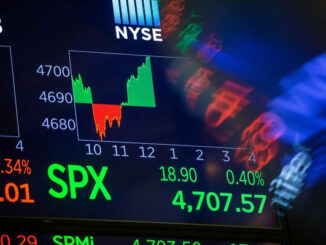
In an escalation amid ongoing hostilities, Ukraine’s military has claimed responsibility for a targeted strike on Russia’s critical Druzhba oil pipeline system. The attack, which occurred on August 18, 2025, at the Nikolskoye pumping station, has disrupted crude oil supplies to key European nations, highlighting the vulnerability of energy infrastructure in the conflict.
This incident marks the second such assault in just two weeks, underscoring Ukraine’s strategy to undermine Russia’s energy exports as a means to weaken its war economy.
The Impacted Pipelines: A Closer Look at Druzhba
The Druzhba pipeline, often dubbed the “Friendship” pipeline, is one of the world’s longest oil transport networks, spanning approximately 4,000 kilometers from Russia and Kazakhstan to refineries across central Europe.
Built during the Soviet era, it remains a vital artery for Russian crude, delivering oil to countries like Hungary, Slovakia, the Czech Republic, Poland, and Germany. The southern branch, which was hit in this latest attack, primarily serves Hungary and Slovakia, while the northern branch to Poland and Germany has been largely halted due to EU sanctions imposed after Russia’s 2022 invasion of Ukraine.
The specific target, the Nikolskoye pumping station, is a key node in the pipeline’s operations. Ukraine’s General Staff confirmed the strike halted a conduit essential for crude supply to parts of central Europe.
This follows a similar drone attack on August 13 at the Unecha junction in Russia’s Bryansk Region, which also temporarily disrupted flows.
As a result, Russian oil deliveries to Hungary and Slovakia have been suspended indefinitely, with Hungarian Foreign Minister Péter Szijjártó accusing Ukraine of an “outrageous and unacceptable” assault on energy security.
Slovakia echoed these concerns, noting the halt in supplies.
While the Czech Republic was previously reliant on Druzhba, it has transitioned to alternative sources via an Italian pipeline earlier this year, mitigating direct impact.
However, the disruption affects three EU countries still purchasing Russian oil, potentially straining regional energy stability.
Financial Impacts: Straining Russia’s Economy and Global MarketsUkraine’s intensified campaign against Russian energy assets is inflicting significant economic pain on Moscow. Estimates from Ukrainian sources suggest that long-range strikes on oil infrastructure could cost Russia over 4% of its GDP in 2025 alone, by disrupting exports and refining capacity.
The Druzhba pipeline, exempt from broader EU oil bans, continues to generate revenue for Russia, making it a prime target. Previous attacks, including 25 strikes on strategic facilities in January 2025, have already forced suspensions and repairs, reducing output and export volumes.
For affected nations, the financial toll is immediate. Hungary, which relies on Druzhba for a substantial portion of its crude imports, faces potential shortages that could drive up domestic energy costs and impact industries dependent on affordable oil.
Slovakia is similarly vulnerable, with both countries criticizing the attack as a threat to their sovereignty.
On a global scale, while Druzhba’s flows represent a fraction of the worldwide supply, repeated disruptions could contribute to volatility in oil prices. Brent crude futures have shown sensitivity to such events, potentially rising if repairs are prolonged and alternative supplies tighten.
Broader economic ripple effects include increased repair costs for Russia and potential insurance hikes for energy infrastructure. Ukraine’s strategy appears aimed at eroding Russia’s financial ability to sustain the war, with oil refineries accounting for 42% of drone attacks since mid-2025.
|
Aspect
|
Impact on Russia
|
Impact on Affected Countries
|
Global Market Implications
|
|---|---|---|---|
|
Revenue Loss
|
Reduced exports via Druzhba; estimated 4% GDP hit in 2025
|
Higher import costs; potential shortages in Hungary/Slovakia
|
Possible oil price spikes if disruptions persist
|
|
Repair Costs
|
Billions in infrastructure fixes; repeated attacks strain budgets
|
Emergency sourcing from alternatives increases expenses
|
Volatility in futures markets; supply chain adjustments
|
|
Long-Term
|
Weakened war funding; shift to less efficient export routes
|
Push for diversification away from Russian energy
|
Heightened focus on energy security in Europe
|
Potential Impact on Peace Talks: Escalation at a Critical Juncture
The timing of this attack—mere hours before a scheduled meeting between Ukrainian President Volodymyr Zelensky and U.S. President Donald Trump to discuss ceasefire possibilities—has raised alarms about its geopolitical ramifications.
Zelensky has accused Russia of launching “cynical” strikes on Ukrainian cities to undermine the talks, while the pipeline assault could be seen as Ukraine’s retaliatory move to pressure Moscow.
Hungary, a NATO ally with close ties to Russia, has issued strong warnings, with Szijjártó labeling the strike a “blow to sovereignty” and reminding Ukraine of Hungary’s role in supplying electricity to Kiev.
This could fracture EU unity, as Hungary has consistently criticized Western support for Ukraine and advocated for peace on terms favorable to Russia.
The incident may harden positions, making concessions less likely and prolonging the conflict.
Analysts suggest such attacks signal Ukraine’s determination to negotiate from strength, but they risk alienating potential mediators like Trump, who has urged Ukraine to abandon hopes of reclaiming Crimea or joining NATO.
If escalations continue, peace talks could stall, leading to further attacks on energy assets and broader instability in European energy markets. As the conflict evolves, the targeting of infrastructure like Druzhba underscores the intertwined nature of energy, economics, and diplomacy. For now, repairs are underway, but the long-term fallout remains uncertain.
Is Oil & Gas Right for Your Portfolio?
Crude Oil, LNG, Jet Fuel price quote
ENB Top News
ENB
Energy Dashboard
ENB Podcast
ENB Substack






